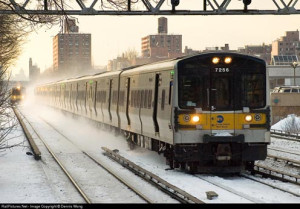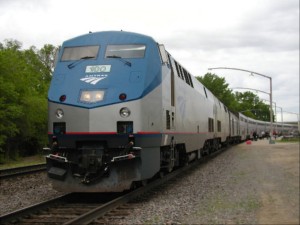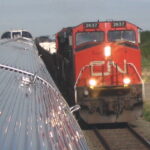Budget Cuts in Congress Frustrate Amtrak Growth.
I’ve just returned from the annual NARP* meeting in Washington, DC, and as always there was a great deal of interest to absorb.
I suppose it’s my background in advertising and marketing, but I am always drawn to the concise statements of fact that clearly illustrate the point to be made. Certainly that’s important in advertising when one or two key points have to be made within the context of a brief 30-second radio or TV spot. Trust me: it ain’t easy!
So here are a couple of factoids that serve to illustrate Amtrak’s pressing — even critical — need for new equipment.
 The Long Island Railroad is one of the country’s busiest, carrying more than 12 million commuters a year. The average LIRR rail car is run for 62,000 miles each year. By comparison, the average Amtrak rail car piles up more than 180,000 miles a year … and most of those cars are more than 30 years old.
The Long Island Railroad is one of the country’s busiest, carrying more than 12 million commuters a year. The average LIRR rail car is run for 62,000 miles each year. By comparison, the average Amtrak rail car piles up more than 180,000 miles a year … and most of those cars are more than 30 years old.
Everyone knows that Amtrak’s ridership has been steadily increasing and will probably exceed 29 million people this year. A growing appreciation of rail travel accounts for some of that, but $4.00-a-gallon gasoline has had a great deal to do with it, too. All that increased demand means that Amtrak needs to increase the number of cars on existing trains and there is mounting pressure to add more trains and even new routes.
 But here is the harsh reality: Amtrak has about 1300 cars in its fleet. To maintain the existing level of service, a minimum of 1015 cars are needed. On any given day, there is an average of about 193 additional cars in one of Amtrak’s shops undergoing regular maintenance. The remaining 112 rail cars are located around the country in various locations to be used as last-minute replacements when something goes wrong with a car in use and it has to be taken out of service.
But here is the harsh reality: Amtrak has about 1300 cars in its fleet. To maintain the existing level of service, a minimum of 1015 cars are needed. On any given day, there is an average of about 193 additional cars in one of Amtrak’s shops undergoing regular maintenance. The remaining 112 rail cars are located around the country in various locations to be used as last-minute replacements when something goes wrong with a car in use and it has to be taken out of service.
So do the math. How is Amtrak going to meet all this demand for more service? What is it about those numbers — those facts — that those members of Congress who keep voting to slash Amtrak’s budget don’t understand?
*National Association of Railroad Passengers


